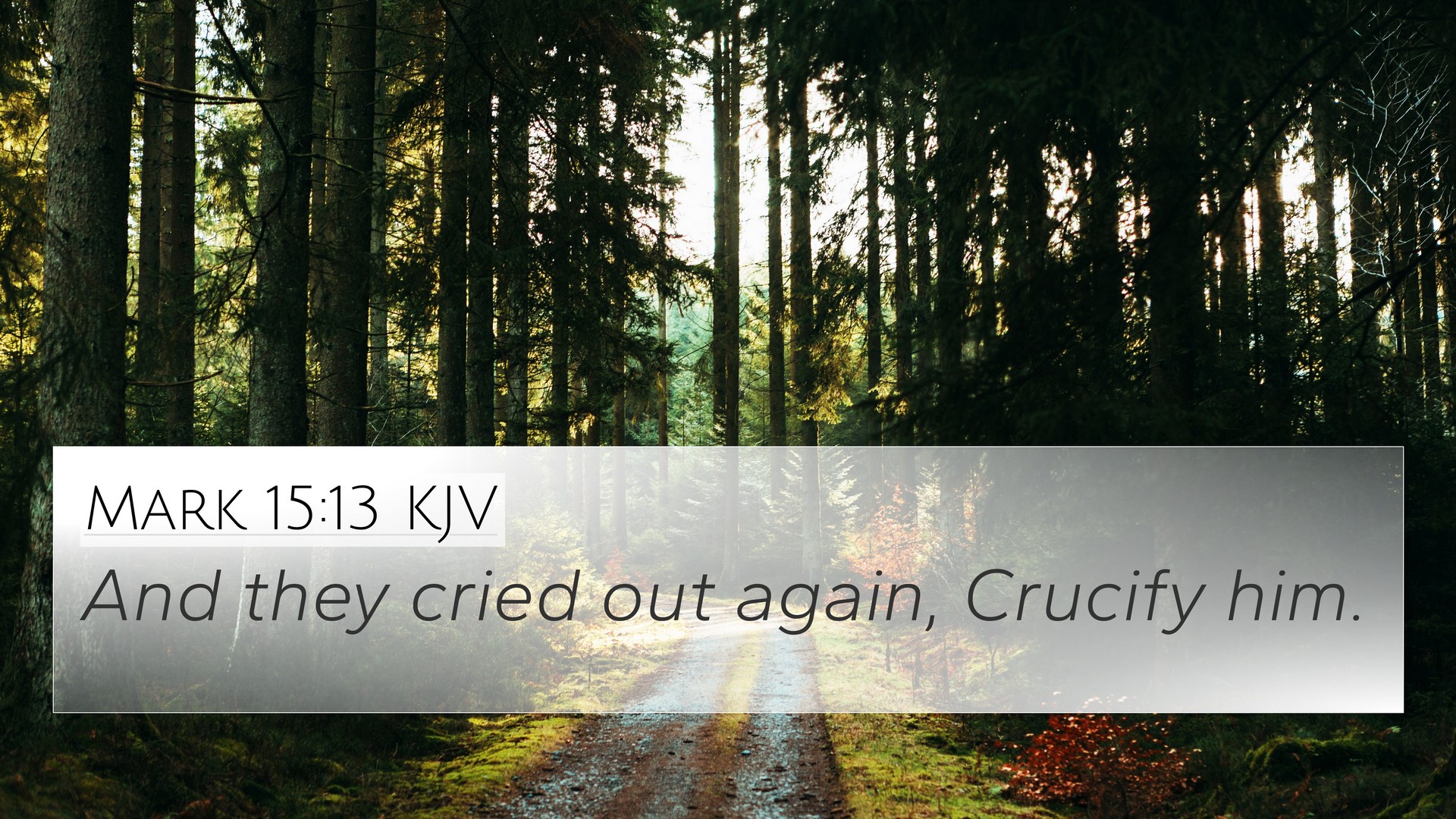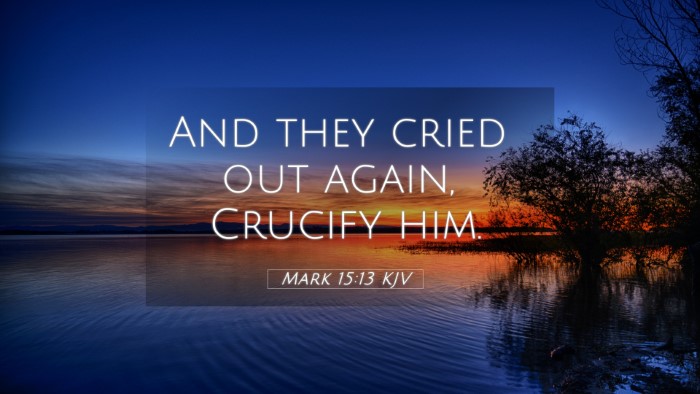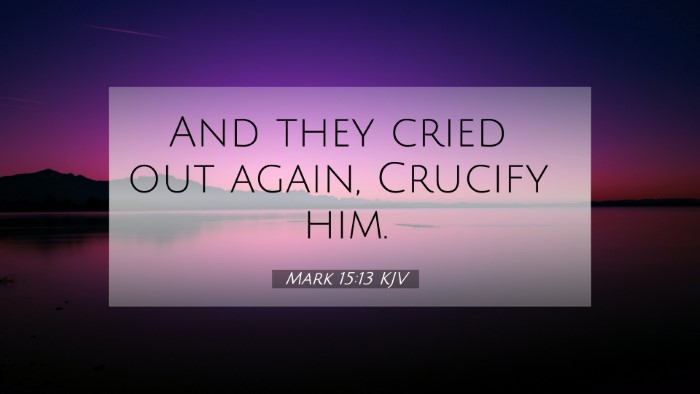Understanding Mark 15:13:
Mark 15:13 recounts the moment when the crowd, influenced by the religious leaders, demands the release of Barabbas instead of Jesus. This pivotal moment showcases the antagonism Jesus faced and sets the stage for His crucifixion.
Contextual Analysis:
The passage occurs during a significant and intense period leading up to the crucifixion of Christ. The decision by the crowd reflects both a fulfillment of prophecy and the rejection of the Messiah. This can be understood through the lens of several public domain commentaries:
- Matthew Henry: Henry emphasizes the rejection of Jesus by those He came to save. He notes that the crowds' rejection is a reflection of human nature—often swayed by leaders and popular opinion.
- Albert Barnes: Barnes highlights the fulfillment of Old Testament prophecies regarding the Messiah's suffering. He reflects on the irony of the people choosing a known criminal over the innocent Son of God.
- Adam Clarke: Clarke elaborates on the political and social dynamics at play. He points out the manipulation by the religious authorities and how the crowd's choice illustrates the broader spiritual blindness in rejecting Jesus.
Key Themes and Connections:
This verse presents several themes and connections throughout Scripture:
- The Rejection of Christ: The choice to release Barabbas instead of Jesus mirrors Isaiah 53:3, where it foretells the rejection of the Messiah.
- Prophetic Fulfillment: Reflected in Psalm 22:16-18, which speaks of the mocking and betrayal of the righteous one.
- Human Nature: The insatiable desire for Barabbas, a violent rebel, resonates with Romans 7:15, illustrating the struggle between flesh and spirit.
- Divine Purpose: The crowd's decision is part of God's redemptive plan, emphasized in Acts 2:23, where Peter states Jesus was delivered up by God's plan.
- The Influence of Leaders: The role of the religious leaders echo Jeremiah 5:31, where prophets and priests distort the truth for their gain.
- Moral Choice: This moment signifies the responsibility of choice, highlighted in Galatians 6:7, indicating the consequences of actions.
- Salvation and Abandonment: The choice made resonates with 2 Corinthians 5:21, emphasizing Jesus becoming sin for humanity, leading to our salvation even amid rejection.
Cross-references:
Here are some key Bible cross-references related to Mark 15:13:
- Isaiah 53:3 - Prophecy of the Messiah’s rejection.
- Psalm 22:16-18 - Prophetic imagery of the suffering servant.
- Acts 2:23 - Affirmation of Jesus’ predetermined plan despite the rejection.
- Matthew 27:21 - Parallel account of the crowd's choice between Jesus and Barabbas.
- Luke 23:18-25 - Another Gospel perspective on the decision of the crowd.
- Romans 7:15 - Insight into human nature and the struggle with sin.
- Galatians 6:7 - The principle of reaping what one sows as it applies to choices.
Conclusion:
Mark 15:13 encapsulates a critical moment in Christian theology, illustrating the rejection of Christ by His people and the tragic choice that led to His crucifixion. Through the insights from various commentaries and the thematic connections with other scriptures, this verse urges readers to reflect on their own choices and the broader implications of rejecting truth in favor of popular opinion.
Exploring Further:
For those interested in a deeper understanding of Biblical narratives, employing tools for cross-referencing can enrich one's study. Utilizing a Bible concordance or a cross-reference Bible study guide can help identify rich inter-Biblical dialogues that illuminate the themes of salvation, rejection, and divine purpose found throughout the Scriptures.


